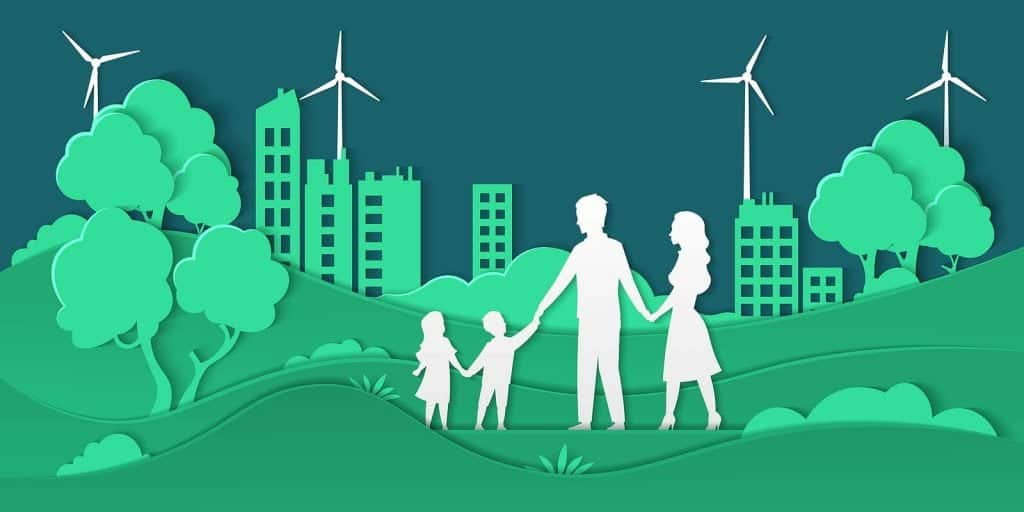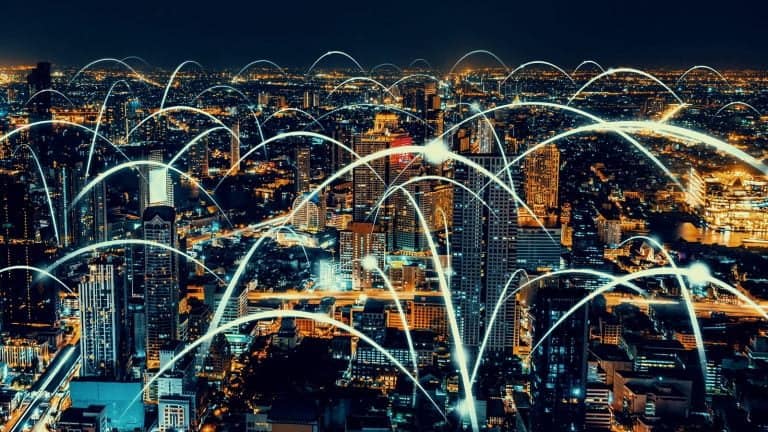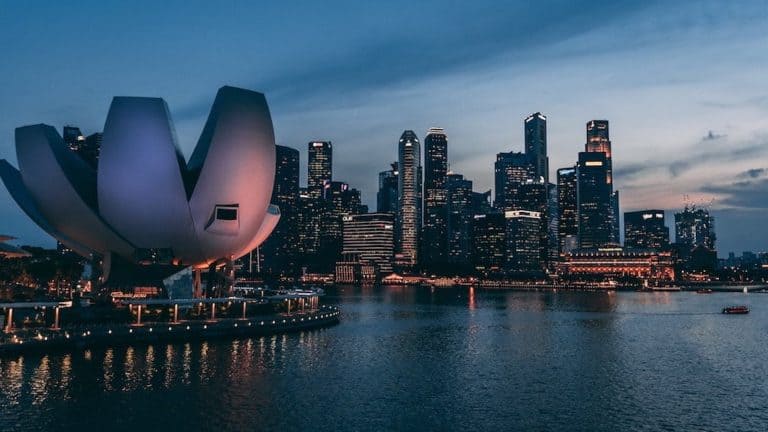When it comes to issues of the smart city and the environment are there any clear advantages over other urban areas? If so, what are they? In this article, we will examine the relationship between the smart city and the environment.
Table of Contents
ToggleEveryone is moving to cities and urban areas. This trend began with the industrial revolution and will continue for the foreseeable future. Cities and urban areas provide people with livelihoods. Most commercial activity occurs in urban areas. In addition to providing employment and income-generating opportunities, cities are also centers of culture, arts, and entertainment. The United Nations predicts that by 2050, most people will live in urban areas.
Unfortunately, high population density comes with several risks that include:
- Environmental pollution
- Pandemics
- Traffic congestion
- Inadequate infrastructure
- High levels of crime
- High energy consumption
- Overstretched social services and amenities
Urbanization has contributed heavily to climate change. Most cities in the world today are grappling with bad air quality. Garbage collection and disposal is the number one headache for most densely populated cities. Environmental pollution leads to health problems. In highly polluted cities, fine atmospheric particulate matter causes respiratory diseases, cancer, birth defects, cardiovascular disease, low birth weight, and premature death. Ambient fine particulate matter refers to PM2.5 (particles measuring less than 2.5 micrometers in aerodynamic diameter and less than a 30th of the diameter of a human hair). These particles and precursor chemicals that lead to their subsequent formation in the atmosphere are released from vehicles, coal-burning power plants, industries, waste burning, and several other human and natural sources. Exposure to both smaller and larger airborne particles is also harmful. Still, studies have demonstrated that exposure to high average concentrations of PM2.5 over many years is the most consistent predictor of mortality from diseases. All these adverse health outcomes strain medical services. Fine particulate matter also affects precipitation and climate, which results in additional adverse health and wellbeing outcomes. Plants and animals are also adversely affected, leading to a reduction of biodiversity. Below are a few examples of cities that are paying a heavy environmental price for urbanization:
- Delhi, India: Delhi is the capital of India. Its total urban population is over 26 million. The air quality in Delhi is classified as hazardous and has a high level of pollution throughout the year. In 2019, the city had a PM2.5 reading of 98.6 µg/m³. Delhi struggles with a high population growth rate, perennial traffic congestion, and urban diseases. Vehicle emissions are the greatest culprit. There are large numbers of old buses, trucks, and lorries. In total, the vehicle population is estimated at over 11 million. A large number of production plants and factories do the city. More than a thousand tonnes of pollutants are estimated to be emitted into the atmosphere every year from factories. Experts recommend wearing a mask while outside and avoiding outdoor exercise. The situation in Delhi is replicated across the country. According to the State of Global Air, India is the most polluted country globally, with an average annual population-weighted PM2.5 of 83.2µg/m³ in 2019.
- Dhaka, Bangladesh: Dhaka, the capital of Bangladesh, has a total urban population of over 21 million people. With a yearly average PM2.5 reading of 83.3 μg/m³, the city’s air is unhealthy all year round. Most of the pollutants are emitted by vehicles, industrial plants, and construction sites. Outdoor exercise is not advisable, and residents are encouraged to wear a mask when outdoors. The rest of Bangladesh is also highly polluted. The average annual population-weighted PM2.5 in 2019 was 63.4μg/m³.
- Chengdu, China: With a total urban population of over 18 million people, Chengdu is one of the most populous regions in Western China. It is home to many industries and suffers the same pollution challenges that afflict many rapidly developing cities in China. Much of its pollution comes from vehicle emissions and factory effluents. The city is shielded from winds by the Qin Mountains in the north. It also has high relative humidity levels all year round. These two factors contribute to particulate matter accumulation in the atmosphere.
How Can the Environment Benefit from Smart City Initiatives?
The smart city and the environment are directly related. One of the things that the COVID-19 pandemic taught us is that the earth is resilient. When lockdowns led people to park their vehicles and factories powered down, it was astonishing to see the emergence of clear skies and fresh air in cities globally. In some places, residents experienced clear skies for the first time in decades. The first image below shows Delhi before the pandemic lockdown, and the second image shows the improved air quality after implementing lockdown measures.
(Image source: BBC)
Smart city initiatives can help cities like Delhi, Dhaka, and Chengu attain and sustain better air quality levels than were seen during the lockdown. But, how exactly will smart city technologies achieve this? Below, we offer a few insights.
Air Quality Monitoring Smart Cities
Air quality monitoring in smart cities helps improve air quality. There are many approaches and recommendations in this regard:
- Get a clear view of the data: Smart cities are managed based on insights that technology provides. So, the first thing a city should do is put in place technologies that give it a clear view of the data. This is important because even in the most polluted cities, there are pockets where the air quality is better than others. The air quality can be vastly different in two blocks adjacent to one another. With data, the right solutions are possible. The Internet of Things helps a great deal. Internet-enabled devices around the city will have air quality sensors to collect data. Other options to collect data include mobile measurement using drones, vehicles, and bikes. Very few cities have comprehensive data on air quality throughout the city. With data insights, regulators and environmental activists can make their cases with concrete data. For example, air pollution mapping in Oakland, California, has provided residents with data to argue against further industrialization. Data also heightens awareness and catalyzes legislative actions such as placing a limit on vehicle emissions and banning certain types of industrial operations.
- Find solutions using the data: With accurate data in place, cities can begin to explore innovative uses of the data that lead to better air quality. For example, in Leeds, UK, air quality sensing and geofencing technologies are used to automatically switch hybrid vehicles to electric mode only when they enter highly polluted areas. Normal hybrid operation resumes when they leave the bad patch. This helps the bad air dissipate faster naturally. Continuous smart city environmental monitoring will lead to more insights on how data can be used to fix smart city environmental issues.
Smart Traffic Management Solutions
Any discussion of the smart city and the environment would be incomplete without addressing the issue of vehicle emissions. In most cities, vehicle emissions are the number one cause of poor air quality. The best solution to reducing vehicle emissions is to make it a policy to eliminate the internal combustion engine. Some countries have taken bold steps in this direction. For example, www.weforum.org/agenda/2017/05/india-electric-car-sales-only-2030India has plans to ensure only electric cars are sold in the country by 2030. France and the UK followed suit and are planning to ban petrol and diesel engines by 2040.
However, while legal solutions such as these are the way to go, there is a need to explore smart traffic solutions to reduce current air pollution. The following are a few useful smart city technologies:
- Mapping and rerouting: Traffic gridlocks lead to greater emissions. It is better to have free-flowing traffic. Smart traffic cameras map congestion, and smart traffic lights turn green or red as necessary to limit congestion.
- Smart parking apps: One of the causes of traffic congestion is drivers slowing down and stopping erratically as they look for parking spaces. Smart parking apps that notify drivers of empty parking spaces would reduce this behavior.
- Ridesharing apps: Ridesharing apps reduce the number of vehicles on the road. The wide adoption of these apps would encourage more people to leave their cars at home.
- Data sharing with motorists: Sharing traffic data with motorists can help drivers avoid congested areas and exacerbate an already bad situation. Drivers who realize their routes are congested can also organize alternative means of transport, reschedule meetings, or reconvene meetings in less congested parts of the city.
- Bicycle lanes and bike hiring services: The creation of bike lanes and facilitating start-ups to launch bike hiring services can lead more people to abandon driving. For success, such a strategy must be accompanied by improved security and a public health campaign extolling the virtues of bike riding. However, for highly polluted cities, this strategy would have to come at the tail-end once other measures have improved air quality to acceptable standards for outdoor exercise.
Shore Connection Power Supply for Ships
Ships often burn fuel when in port to run ship services. This necessity causes high levels of pollution in coastal cities. One way to prevent this is to build technology that allows ships to hook up to green energy sources once at port. Siemens has developed shore connection technology that is already in use in Hamburg, Germany.
5G Internet and Remote Work
5G Internet is a critical technology for the roll-out of smart cities. Without 5G, many of the benefits associated with smart cities would not be realized. 5G Internet is lighting fast and will make Wi-Fi faster than the current Ethernet speeds. The COVID-19 pandemic has accelerated the transition to working from home. With the roll-out of 5G globally, most people will soon be able to work from home. With more people working remotely, there will be fewer commuters and consequently less vehicle and traffic congestion. The air and the general environment will cleaner as a result.
Smog Free Towers
In Beijing, a tower cleans 30,000 cubic meters of air per hour using only 1,170 watts of energy. The smog particles extracted from the atmosphere are used to make rings and trinkets. In the future, we will have smart city pollution jewelry.
(Image source: studioroosegaarde.net)
Energy-saving Smart City Project
Urbanization places a tremendous strain on energy. Residential and commercial areas require lighting, and industries need to operate. Countries often have no option but to turn to dirty sources of energy such as coal to satisfy their cities. The only way out is an energy-saving smart city project to convert buildings into energy-efficient buildings and find other ways to save energy. Energy-efficient buildings typically make use of natural light to limit the need for lighting. In cold climates, they are constructed with light insulating material to minimize heat loss. Air conditioning and heating systems can be operated using solar power. High-rise buildings have vast solar potential and can even sell excess energy back to the grid. Efficient street lighting or the use of solar street lights can lead to massive energy savings in most cities. For example, 8 Spanish cities reduced their energy consumption by two-thirds using energy-efficient bulbs.
Final Thoughts – The Smart City and the Environment
The above are just a few solutions that have been successfully rolled out in different cities. The fact is the environmental benefits of smart cities are wide-ranging. We are yet to see what implementations scientists and urban planners come up with to ensure smart cities’ environmental sustainability.






